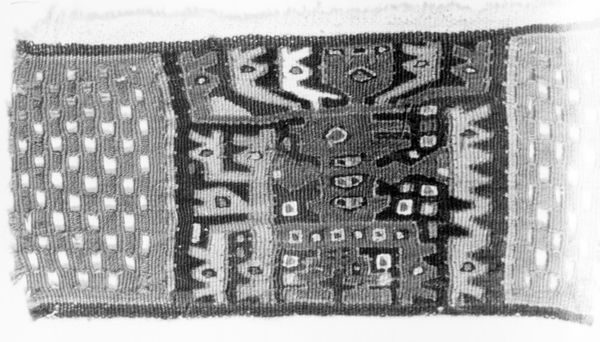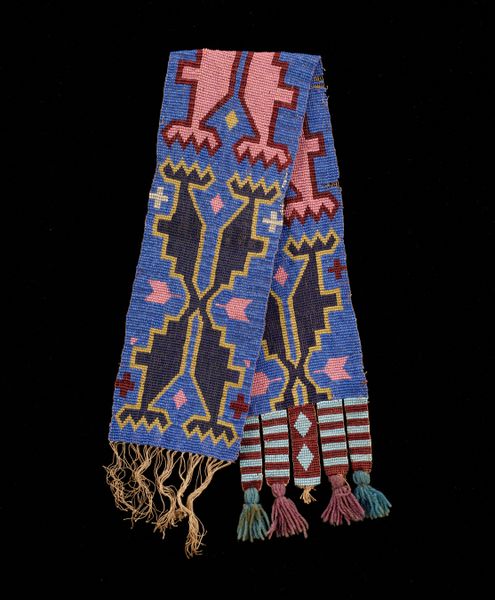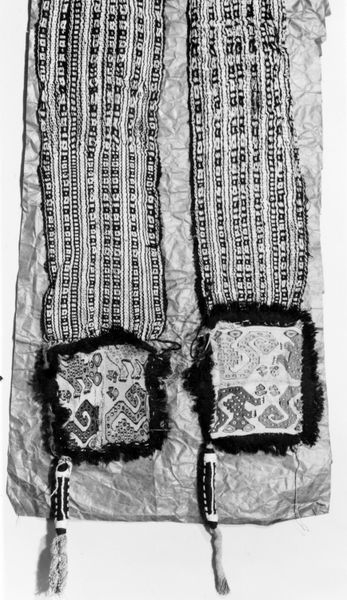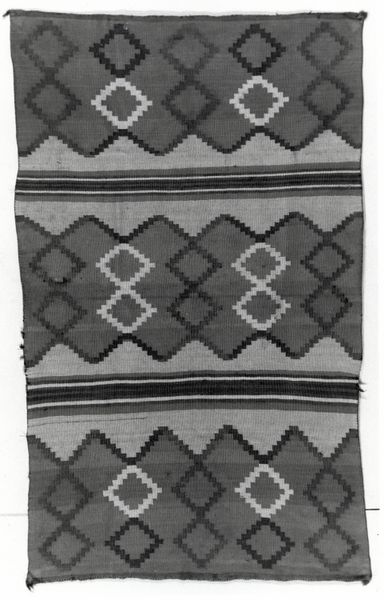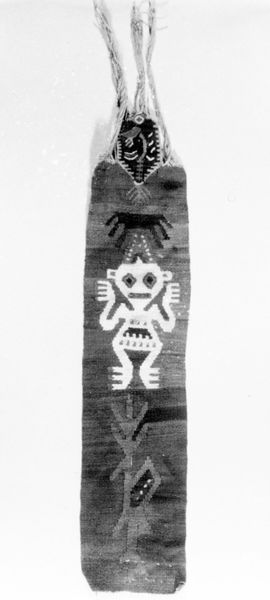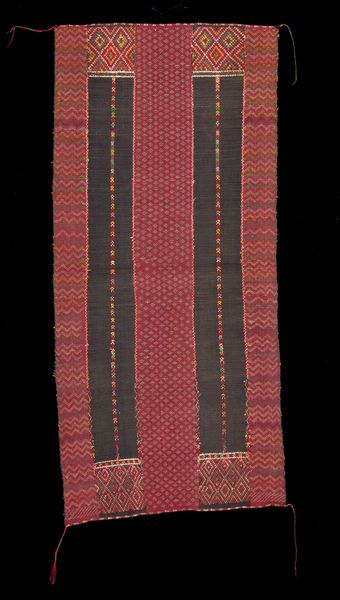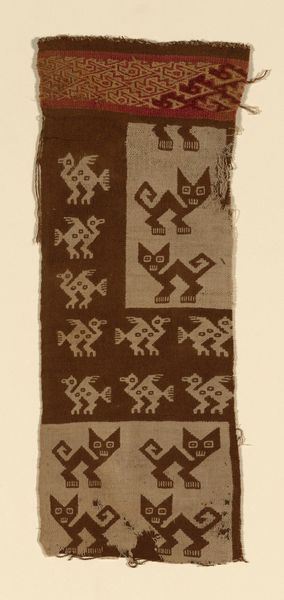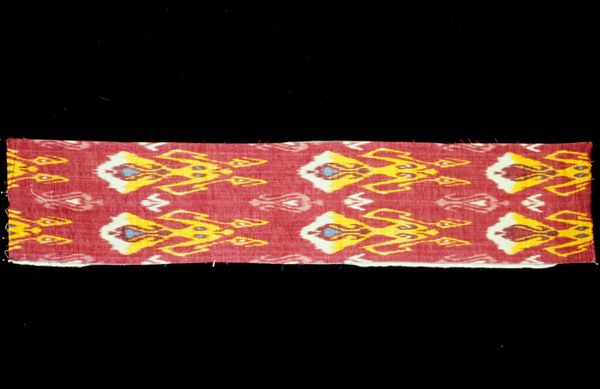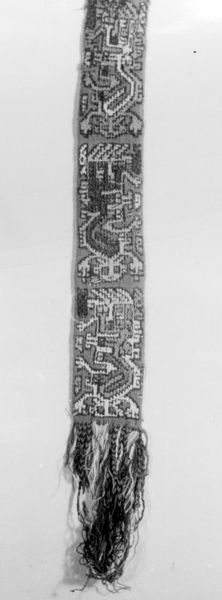
fibre-art, weaving, textile
#
fibre-art
#
sculpture
#
weaving
#
textile
#
geometric
#
indigenous-americas
Dimensions: 137.2 × 19.7 cm (54 × 7 3/4 in.)
Copyright: Public Domain
Curator: Here we have a piece from the Nazca culture known as "Fragment (Border)". It's a textile fragment, believed to have been crafted sometime between 700 and 900 AD. Look closely at how fibre art intertwines with abstract forms. Editor: Wow, I get such a primal energy from this piece! It looks like something you'd find safeguarding a forgotten temple, you know? Like it holds stories, maybe even warnings woven right into its threads. Curator: Precisely! Notice how the weaver employs a limited palette, compelling the viewer to focus on the intricacies of the geometric patterns and the interplay between positive and negative space. Each shape seems deliberately placed. Editor: I’m getting a definite sense of balance… or is it tension? Like these strange figures are frozen mid-dance. Is it my imagination, or are those avian shapes interspersed throughout the geometric designs? Curator: You're very astute. Indeed, ornithomorphic forms appear frequently in Nazca art, suggesting a potential connection to their spiritual beliefs and perhaps shamanic practices related to flight or transcendence. It's tantalizing that we see only a fragment, missing key elements that could clarify its narrative. Editor: So true! I almost wish it wasn’t in such perfect condition. Knowing more of the story woven in the making adds even more of an evocative layer to experiencing the work. Still, in isolation it remains a potent, cryptic, almost talismanic object, wouldn't you say? Curator: A compelling suggestion. Consider, too, how the texture itself, the materiality of the textile, contributes to this sense of age and mystery. The very act of weaving, a meticulous and time-consuming process, elevates it from mere decoration to a powerful form of communication. Editor: Looking at this from a maker's point of view... imagine the dedication required. I’d be completely engrossed in pattern-making, getting into the minds of the figures woven into it; what a way to record history, if you really get down to it! Curator: Indeed. The surviving fragment prompts many questions. How does one extrapolate from these visual markers, these subtle signs of symbology, what was truly being expressed? Editor: This fragment whispers of mysteries, it has an aura to it! I bet someone's life mission could revolve around the cultural story and aesthetic of such artwork! Curator: Well, regardless of unanswered questions, its inherent structure and symbolism invites continuous re-evaluation through the lens of new information and scholarship, remaining relevant in how we study the nature of art across vast periods of history.
Comments
No comments
Be the first to comment and join the conversation on the ultimate creative platform.

